Key Takeaways
-
Ants as Architects: Ants build complex, organized homes using teamwork and chemical communication—no leaders or blueprints required.
-
Types of Ant Homes: Ant nests vary widely and include underground tunnel systems, carpenter ant galleries in wood, mounds, and even floating or leafy shelters.
-
Benefits to the Environment: Ant colonies support ecosystems by aerating soil, decomposing organic matter, preying on pests, and spreading seeds.
-
Preventing Ant Infestations: Stop infestations by eliminating food and water access, sealing entry points, keeping yards clean, and applying natural repellents.
-
Professional Help: For persistent or large infestations, contact pest control professionals to safely and effectively manage ant problems.
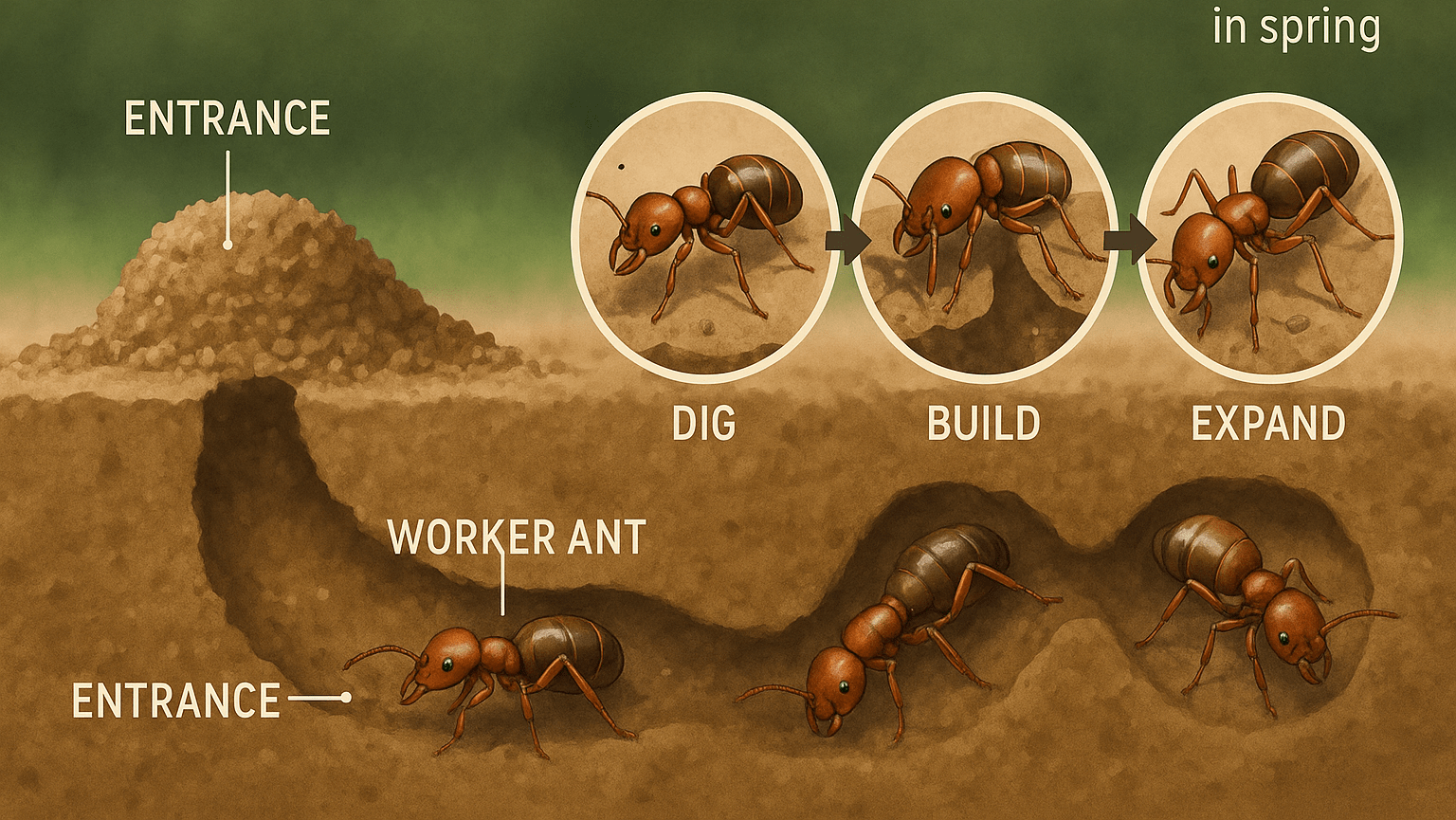 Have you ever paused mid-step, noticing those tiny dirt mounds scattered across your yard or sidewalk cracks, and wondered, “What’s really going on down there?” Honestly, these little dirt piles hide a secret world buzzing with incredible activity—ants constructing their own miniature cities.
Ants are incredible architects, capable of building complex homes that serve as shelters, nurseries, and storage units for their colonies. These structures, commonly known as ant homes, vary in design and location depending on the species. But you know what? They do it all without blueprints, heavy machinery, or even a boss calling the shots. It’s pure, instinct-driven teamwork at its finest.
This article explores how ants build their intricate homes, the different types of ant colonies, and their environmental benefits. It also includes practical tips on preventing ant infestations and highlights professional pest control solutions.
Concerned those tiny architects might be causing trouble beneath your property? Schedule your Free Pest Inspection today. Our experts can quickly spot ant colonies and help protect your home effectively.
Have you ever paused mid-step, noticing those tiny dirt mounds scattered across your yard or sidewalk cracks, and wondered, “What’s really going on down there?” Honestly, these little dirt piles hide a secret world buzzing with incredible activity—ants constructing their own miniature cities.
Ants are incredible architects, capable of building complex homes that serve as shelters, nurseries, and storage units for their colonies. These structures, commonly known as ant homes, vary in design and location depending on the species. But you know what? They do it all without blueprints, heavy machinery, or even a boss calling the shots. It’s pure, instinct-driven teamwork at its finest.
This article explores how ants build their intricate homes, the different types of ant colonies, and their environmental benefits. It also includes practical tips on preventing ant infestations and highlights professional pest control solutions.
Concerned those tiny architects might be causing trouble beneath your property? Schedule your Free Pest Inspection today. Our experts can quickly spot ant colonies and help protect your home effectively.
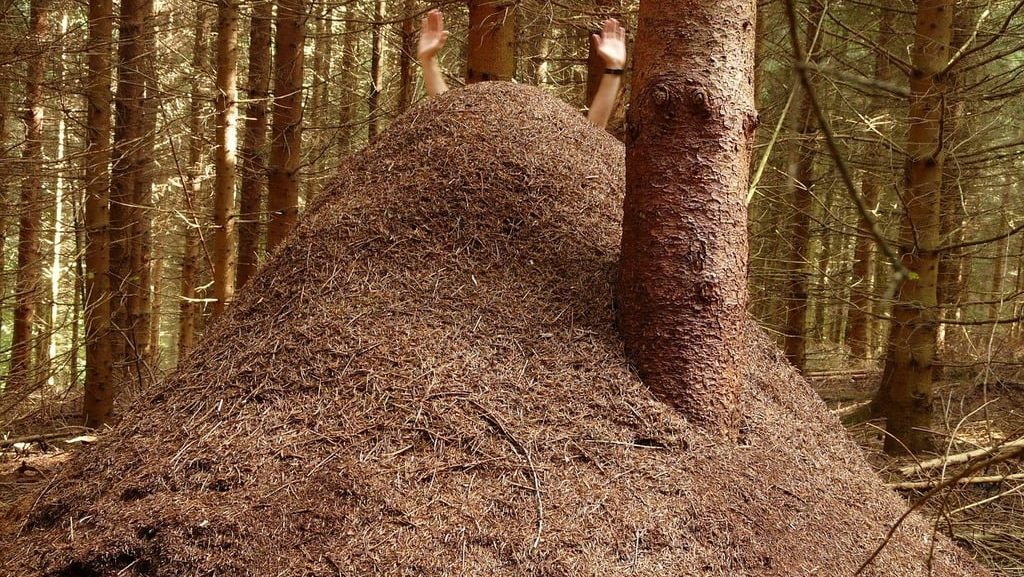

Not getting a solution?
Get your free pest control estimate today!Why Do Ants Even Bother Building Homes?
Ants build homes because, well, they have to. These nests aren’t just cozy hideouts; they’re survival bunkers for the colony. Protecting the queen and the tiny brood of eggs and larvae is priority number one. But beyond that, ant nests serve as temperature-controlled havens, food pantries, and even fungus farms (yeah, some ants farm fungus—pretty cool, right?). Without these carefully constructed spaces, ants wouldn’t survive harsh weather or hungry predators.How Do Ants Make Ant Hills?
Ant hills are not random piles of soil but carefully constructed structures that serve as ventilation systems for underground nests. Ants build these mounds by carrying small soil particles, sand, and plant materials from underground tunnels to the surface. Over time, this process forms a raised mound that protects the colony from floods and predators.The Real Deal: How Ants Actually Build
-
Digging with Tiny Jaws: Ants use their mandibles to scoop out soil one grain at a time. With thousands working in unison, they quickly create complex tunnel systems underground.
-
Designing Rooms Without Blueprints: As they dig, ants form chambers for nurseries, food storage, and rest—all guided by instinct and chemical signals rather than a central planner.
-
Working with What’s Available: Ants incorporate materials like grass, pebbles, and plant fibers to reinforce nest walls, using whatever is nearby—true masters of improvisation.
-
Teamwork Makes the Dream Work: Ants coordinate without leaders, using chemical cues to divide tasks like digging, debris removal, and maintenance with incredible efficiency.
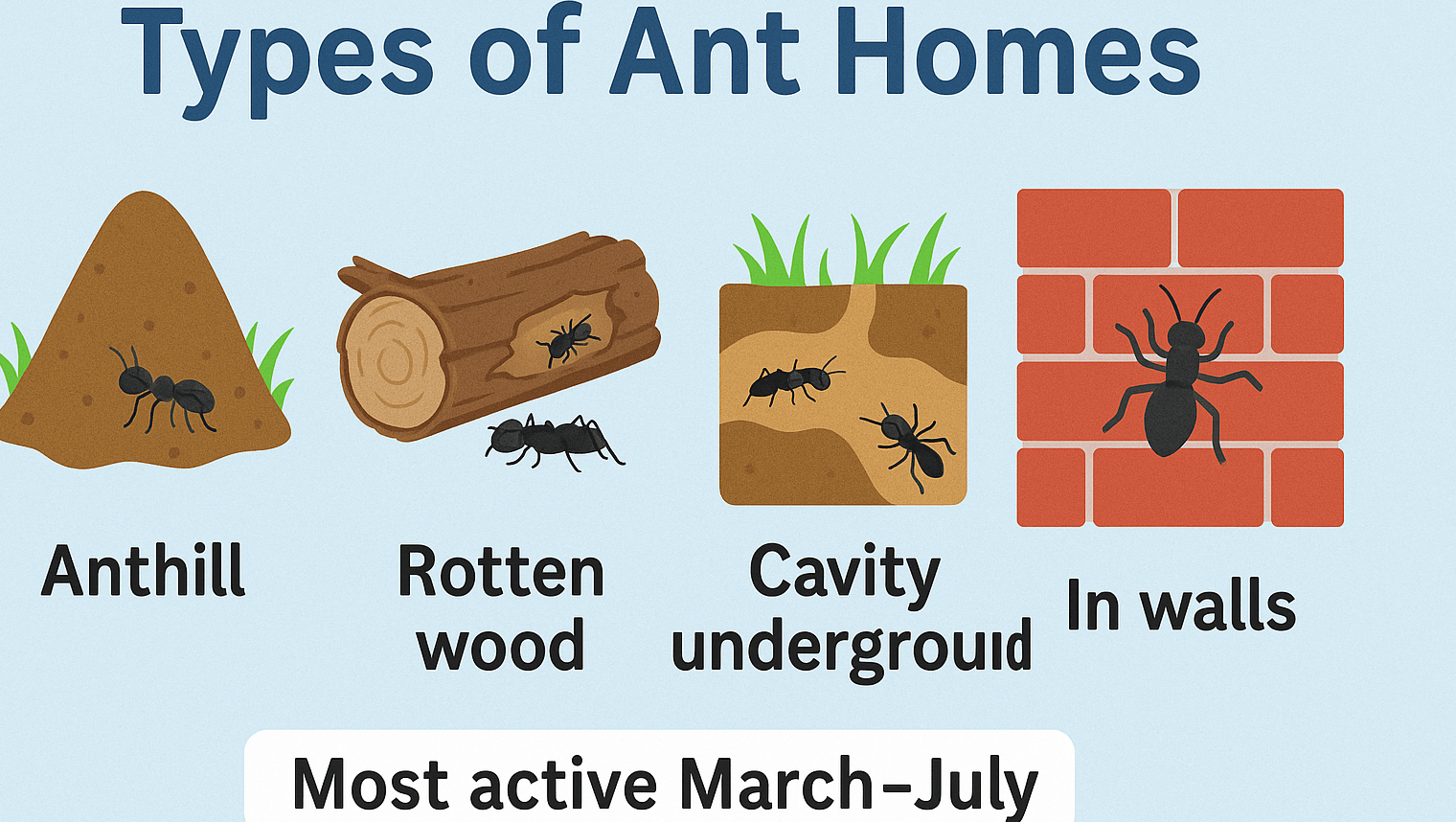
Understanding Ant Homes
Ants build their homes in different locations, including underground, inside wood, or within natural crevices. The design and structure of their nests depend on the species, environmental conditions, and colony size. While many prefer the classic underground tunnels beneath your lawn, others set up under rocks, logs, and even your house’s foundation. Carpenter ants (you know, those sneaky ones you find in your woodwork) don’t snack on wood—they actually carve it out to make galleries for their colonies. And in the tropics, weaver ants stitch leaves together high up in trees using silk from their larvae. Talk about versatility! Ant colonies protect from predators, harsh weather, and external threats. If you feel things have gone out of control, contact pest control professionals. Our team can customize a plan to protect your home effectively.Common Types of Ant Colonies
-
Underground Nests: Built by digging tunnels and chambers in the soil.
-
Mound Nests (Ant Hills): Those tiny mounds above ground aren’t just soil dumps. They’re carefully sculpted entry points for sophisticated underground communities.
-
Wood Nests: Found inside trees, logs, or wooden structures.
-
Leafy Nests of Weaver Ants: Using silk from larvae, weaver ants stitch leaves into waterproof shelters up in the trees—like tiny leafy hammocks.
-
Temporary Nests: Used by nomadic ant species, these ants don’t build homes—they become the home. By linking bodies together, they form temporary shelters that protect the queen and brood during rest stops.
-
Carpenter Ant Galleries: Carved meticulously into wood, these tunnels might cause headaches for homeowners, but they’re architectural marvels in miniature form.
-
Floating Ant Rafts: Floodwaters rising? No worries. Fire ants link themselves into floating rafts, drifting along until they find dry land.
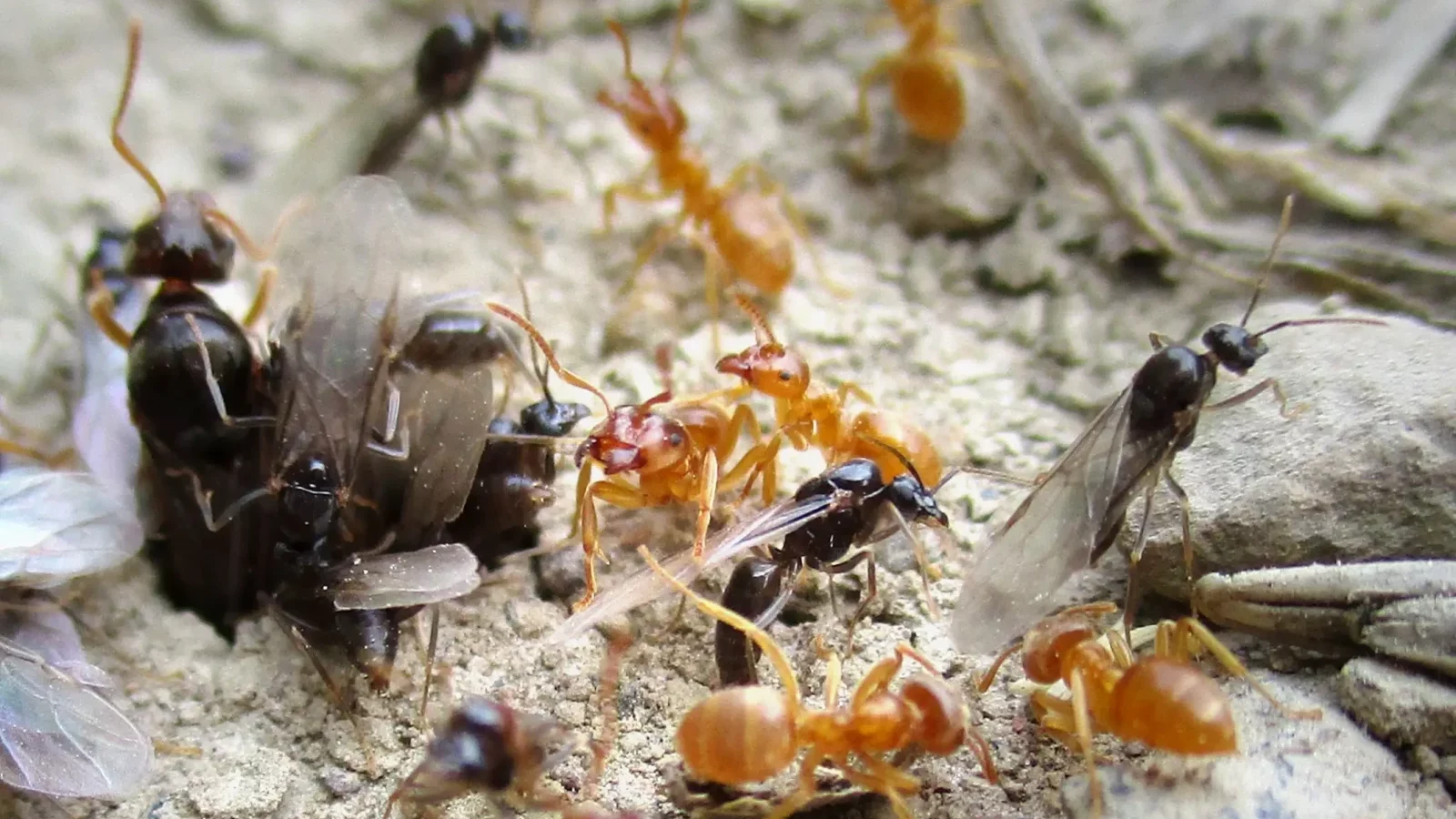
Are Ants Good Builders?
Yes, ants are excellent builders! Their homes are structurally sound, well-ventilated, and designed for efficiency. Using natural instincts and teamwork, ants construct homes that regulate temperature, manage waste, and ensure colony survival.Why Ants Are Expert Builders
-
Self-Organizing Behavior: Ants work together without a leader, following simple rules.
-
Resource Utilization: They use soil, leaves, wood, and even saliva to build nests.
-
Adaptive Design: Ants modify their homes based on climate and threats.
-
Tunnel Networks: Their underground tunnels provide space for food storage and nurseries.
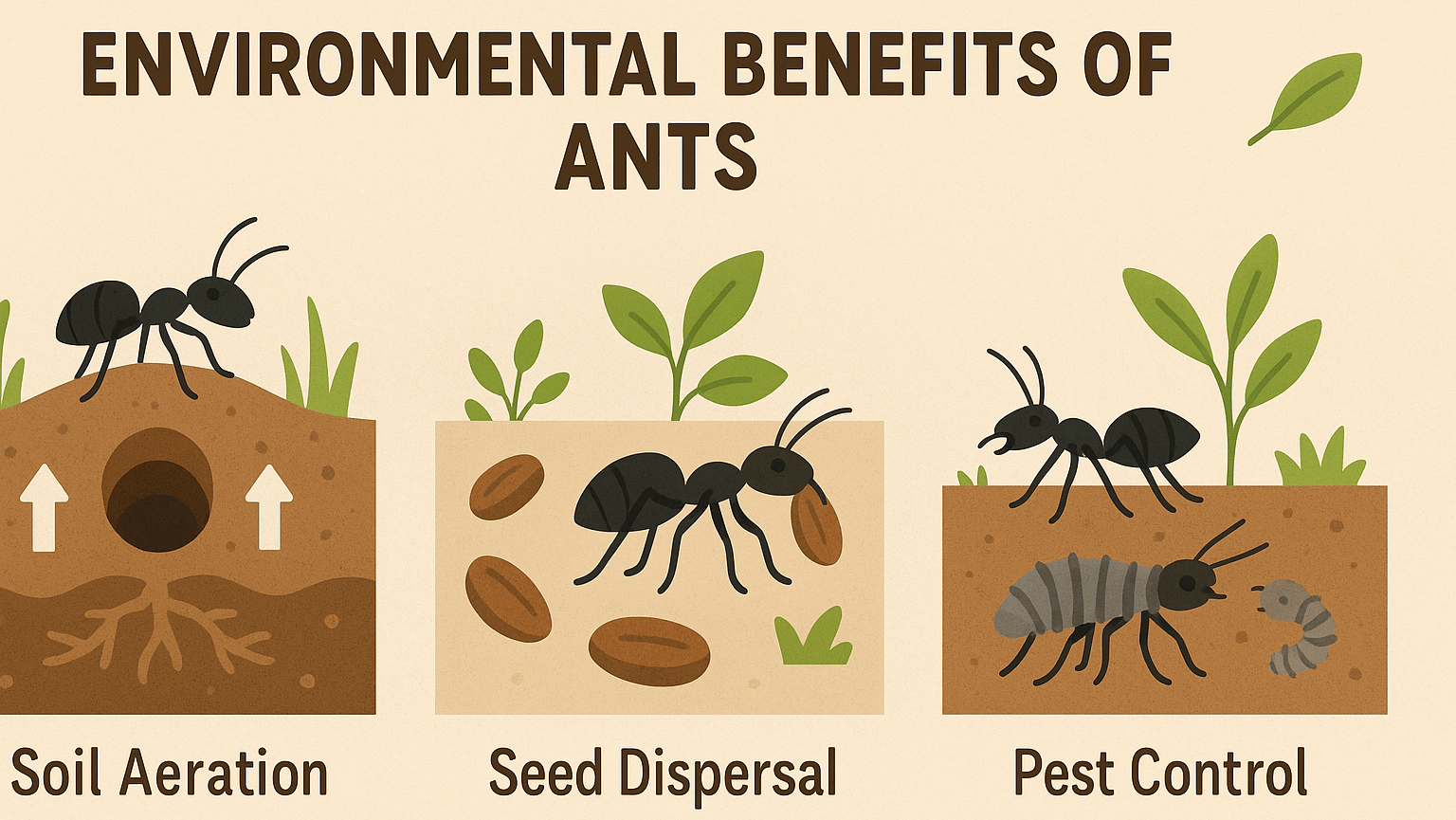
Environmental Benefits of Ant Homes
- Ant nests are not just for shelter; they also play a crucial role in nature. Their tunnels help aerate soil, allowing air and water to reach plant roots. Some ant species even disperse seeds, helping with plant growth and biodiversity.
-
Soil Aeration: Tunneling ants loosen compacted soil, enhancing water infiltration and root growth.
-
Decomposition: Ants break down organic matter, enriching the soil with nutrients and boosting plant health.
-
Pest Control: Many ants feed on insects like termites and caterpillars, naturally reducing pest populations.
-
Seed Dispersal: Ants transport and bury seeds, aiding plant reproduction and forest regeneration.
-
Defense Systems: Narrow nest entrances make it easier for ants to guard against predators and invaders.
-
Flood Management: Ant colonies are engineered to drain water away from critical areas, helping them survive heavy rains.
-
Climate Control: Underground nests regulate temperature and humidity, creating ideal conditions for rearing ant larvae.
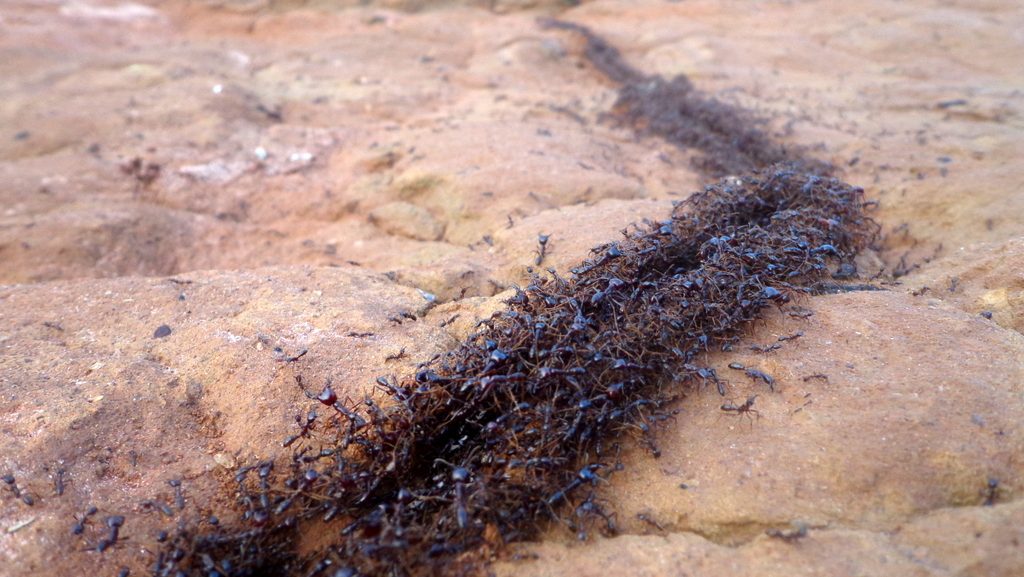
How to Prevent Ants from Building Homes in Your Property
- Preventing ants from nesting in your home or garden doesn’t have to be complicated. Follow these simple steps:
-
Remove Food Sources: Store food in airtight containers and clean up crumbs or spills immediately to eliminate attractants.
-
Eliminate Water Sources: Fix leaks, dripping faucets, and remove standing water to deter ants seeking moist nesting spots.
-
Seal Entry Points: Inspect and seal cracks or gaps around doors, windows, and foundations to block ants from entering your home.
-
Maintain Your Yard: Trim vegetation away from your home’s exterior and clear wood, leaves, or clutter to reduce outdoor nesting options.
-
Use Natural Repellents: Apply peppermint oil, vinegar, or citrus peels near known entry points and common nesting zones.
-
Regular Inspections: Check your home and yard routinely to identify and respond to ant activity before it becomes a problem.
Fun Ant Facts You’ll Want to Tell Everyone
- Some ant colonies reach over 15 feet deep, with hundreds of chambers—like a tiny underground city.
- A super-colony of Argentine ants once stretched over 3,600 miles—an incredible display of teamwork.
- Ants can move tons of soil annually, reshaping the landscape despite their tiny size.





